In recent years, the locals in Dan Phuong District, Hanoi have shifted to cultivating Lys flowers from rice and poor-yield crops which brings high economic value and contributes to improving the living standards of the locals.
Visiting the family of Nguyen Dang Thang in Song Phuong Commune, we saw Thang carefully taking care of the beds of two-month Lys flowers in his garden. Sharing techniques on cultivating the Lys with us, Thang said that he decided to grow this variety of flower after his trips to other localities to learn about new agricultural models. During the initial period, he only learnt techniques on farming Lys from the Internet which were not suitable to climate conditions and the soil in the area, so the productivity was rather low. However, since he has applied techniques and experience learnt from his friend in Moc Chau, Lys plants in his field have a good yield, bringing his family great benefits.
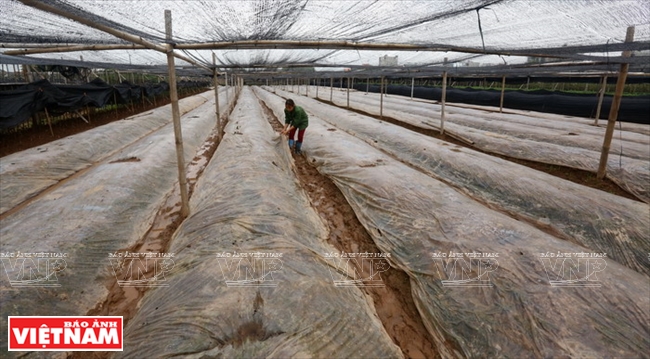
A field of Lys is covered by nets. Photo: Trinh Bo
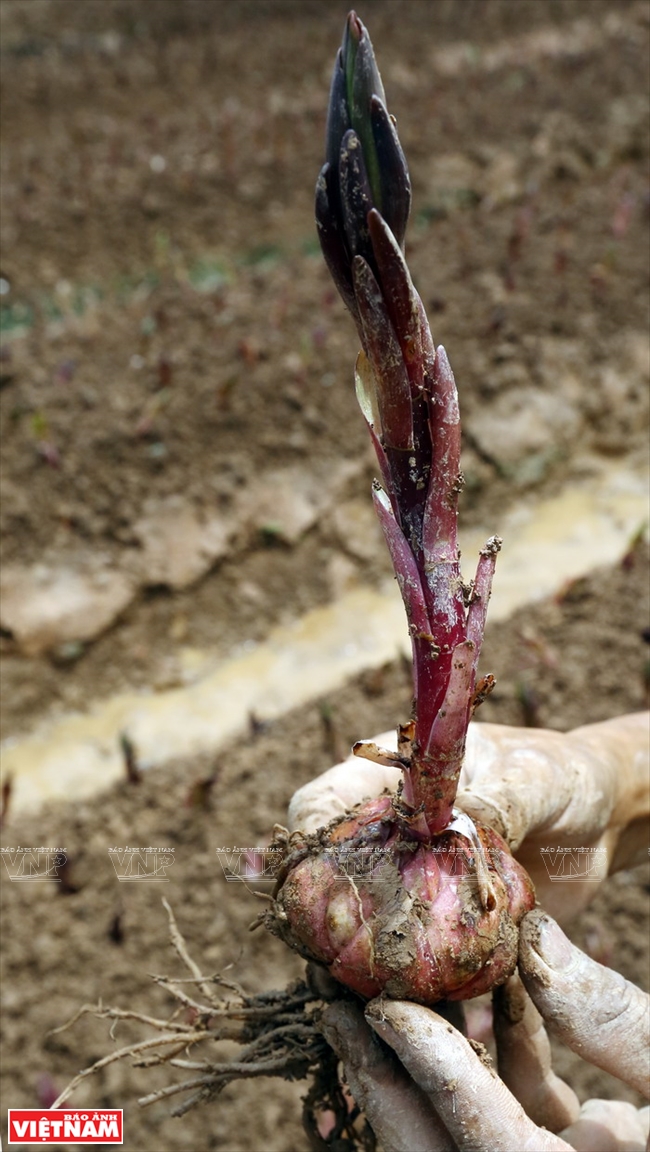
Lys bulbs of at least 15cm height are cultivated in the field. Photo: Trinh Bo
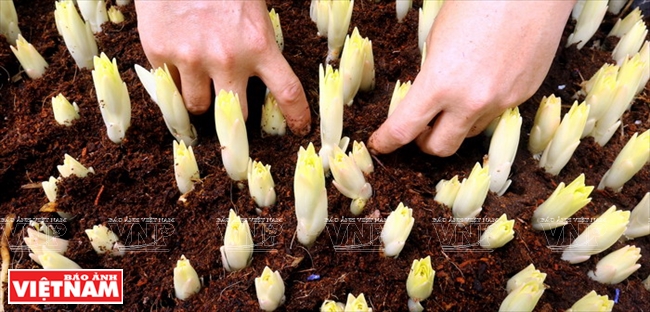
Locals in Song Phuong import Lys seedling bulbs from foreign countries. Photo: Trinh Bo

Lys are sold to markets nationwide. Photo: Trinh Bo
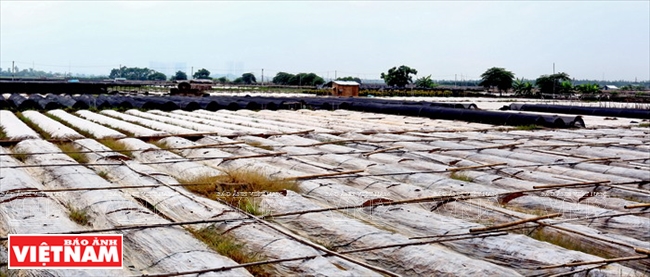
The soil is covered by nylon so it will become soft and have enough moisture
for growing this variety of flower. Photo: Trinh Bo |
Thang stated that Lys cultivation requires the grower’s attention to climate because this variety of flower cannot tolerate hot weather. It needs to be shaded by nets that help maintain suitable light. The soil must be prepared two months before cultivating so it will be soft and have enough moisture for the development of the flower. The seedling bulbs of Lys are mainly imported from Denmark, the Netherlands and Sweden.
Having implemented the model of growing Lys flowers for three years, the family of Thang now has a field of 1,440m2 which helps him earn about 400 million dong/year. Lys harvested from his field are mainly sold to markets in the North and the Quang Ba flower market in Hanoi.
Apart from the family of Thang, the family of Ta Van Tuong in Ha Mo Village is an example of successfully shifting to the model of cultivating Lys in Ha Mo Commune. Tuong has a field of 10,000m2 for growing Lys, earning annually 600-700 million dong.
According to Ta Thi Binh, Chairwoman of Ha Mo Commune’s Agricultural Cooperative, in 2012 the villagers in Ha Mo started growing Lys which brings a high income and provides stable jobs for many locals.

The climate and soil in Dan Phuong is suitable for growing Lys. Photo: Trinh Bo
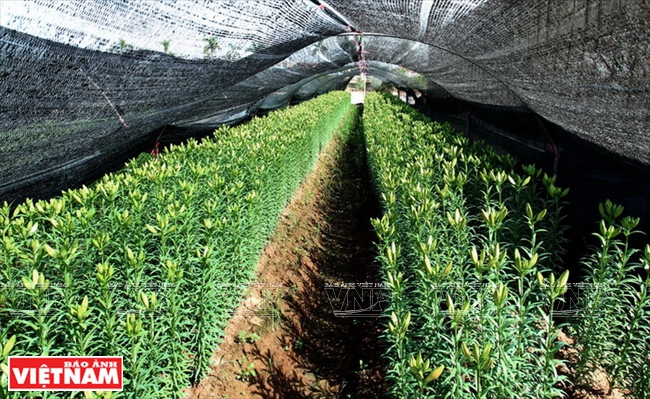
A field of Lys in Song Phuong Commune at harvest time. Photo: Tuan Kiet
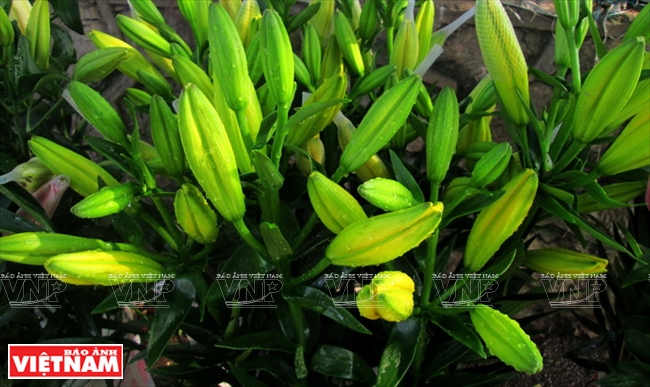
Lys planted in Song Phuong Commune in Dan Phuong District are very beautiful.
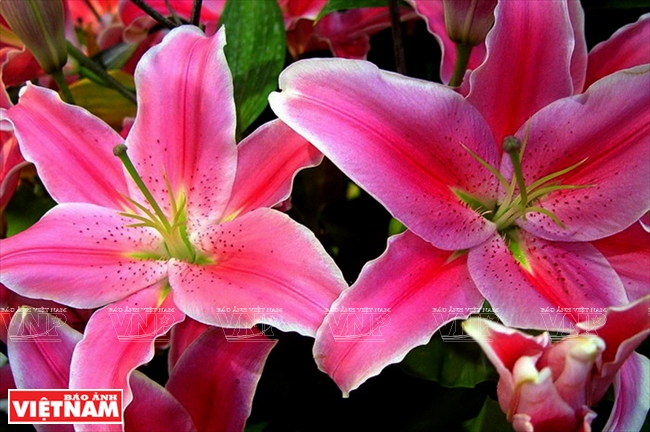
A variety of Lys planted in Song Phuong Commune in Dan Phuong District produces beautiful flowers. Photo: File
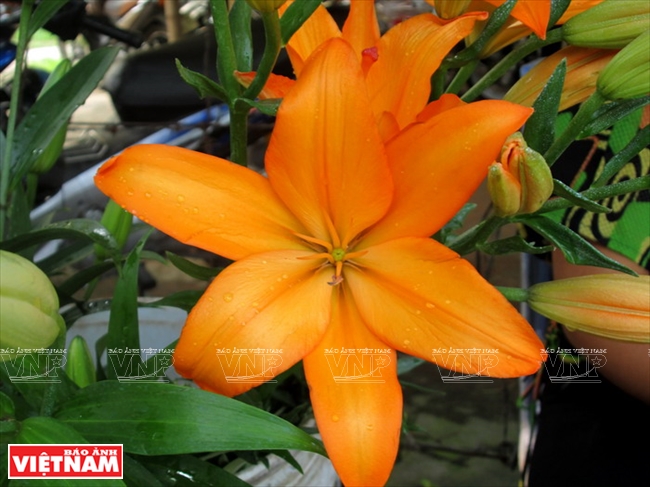
Lys at harvest time. Photo: Trinh Bo |
Nguyen Thac Hung, Head of Dan Phuong District’s Economic Department, the model of growing Lys has developed in the locality for three years with a total area of 100ha. This variety of flower brings an economic value much higher than rice. To expand this effective mode, the district has organised some training courses for farmers and provided them with cultivating techniques and disease treatment. Seeing the profit from Lys cultivation, farmers in neightbouring areas also come to the district to learn how to do it.
Story: Ngan Ha
Photos: Trinh Van Bo & Tuan Kiet
phamtrangnhung